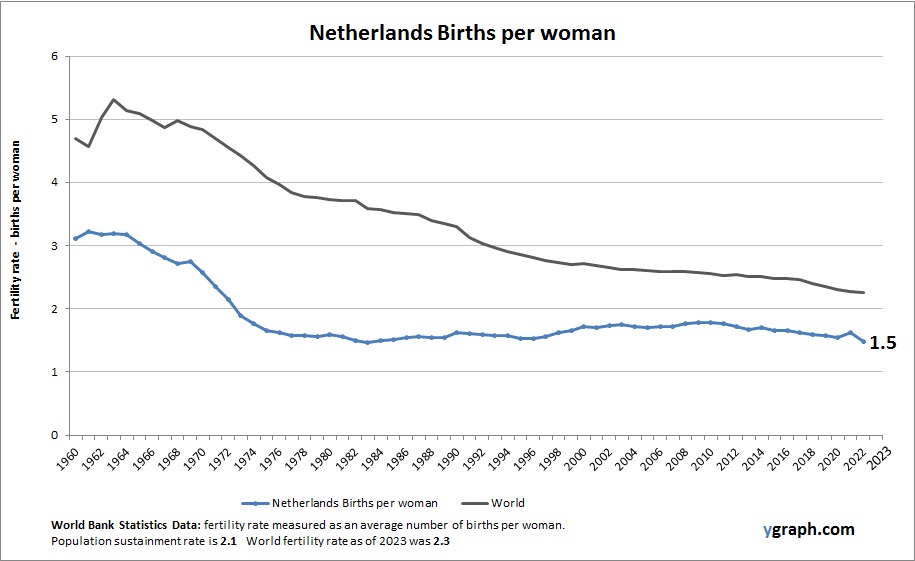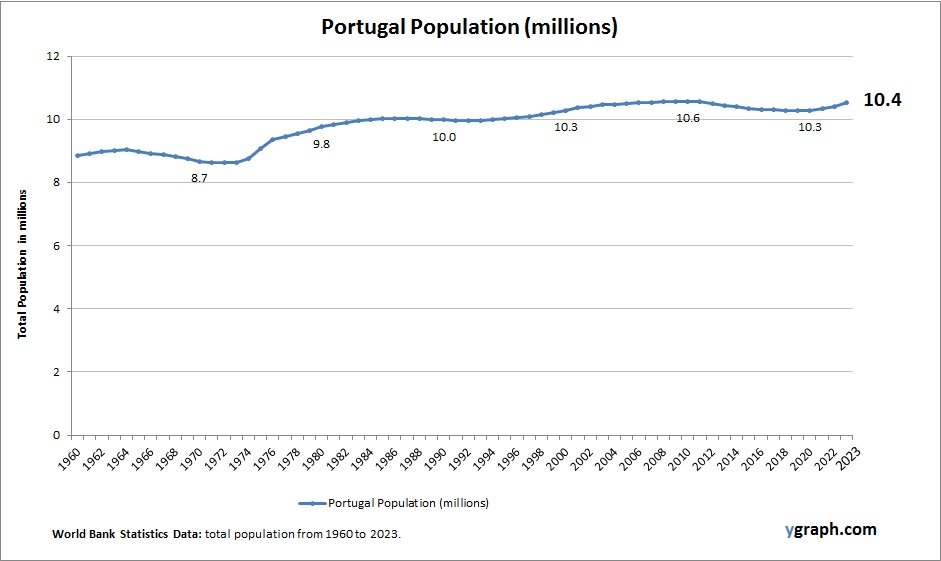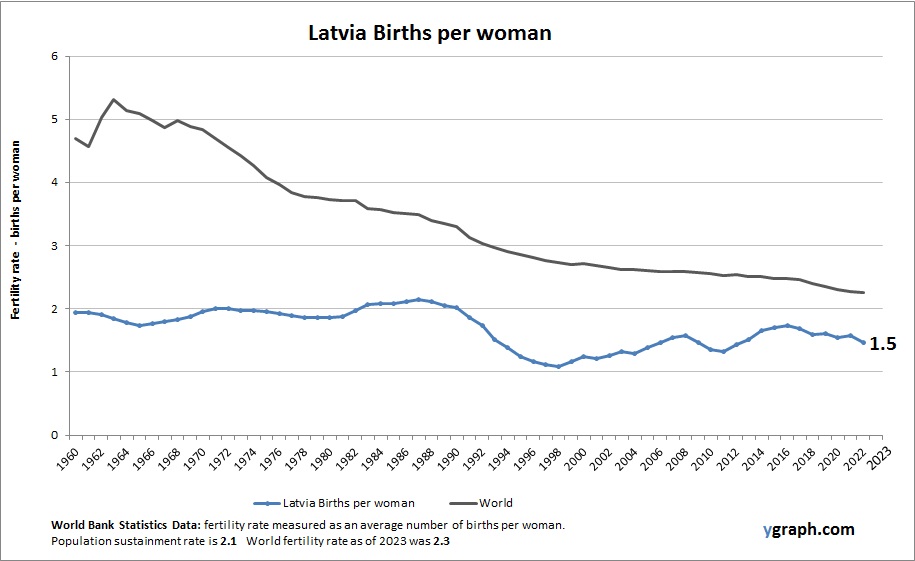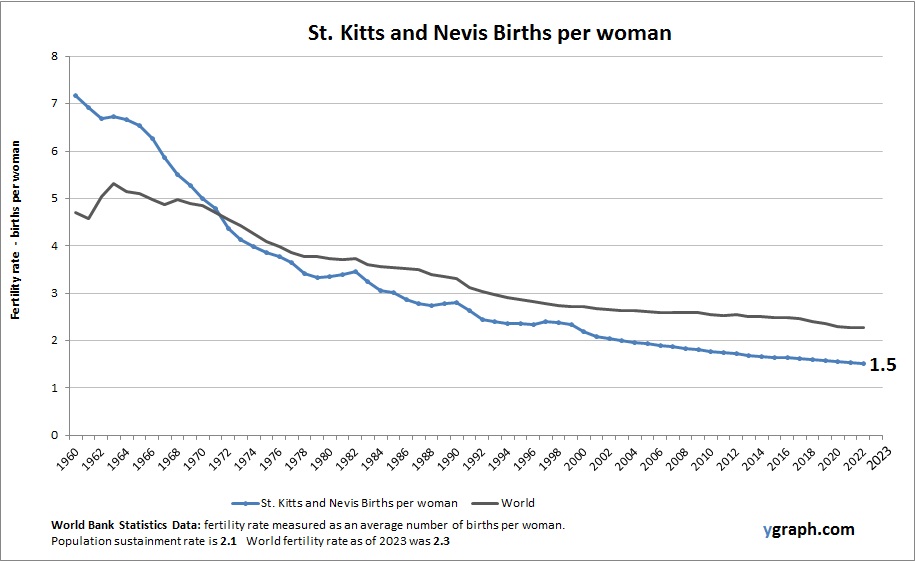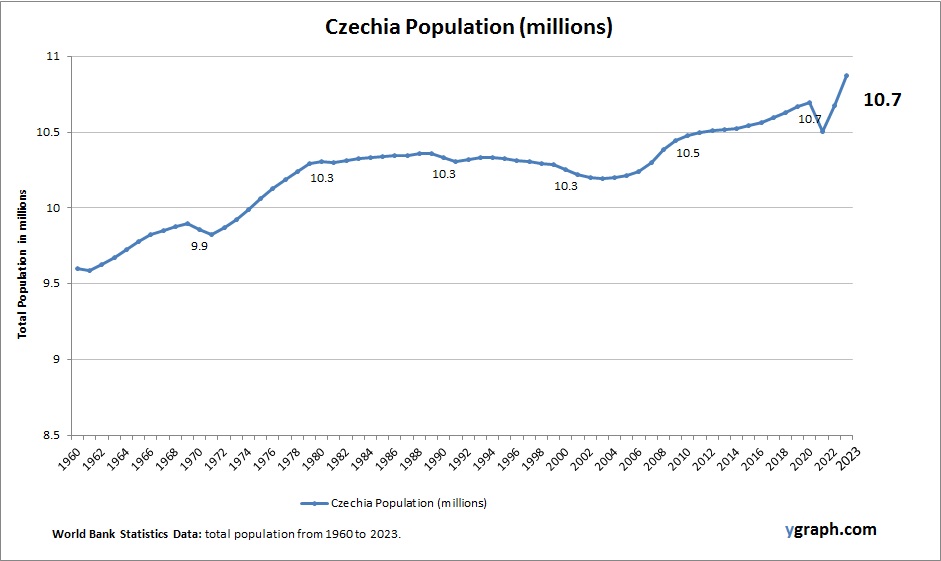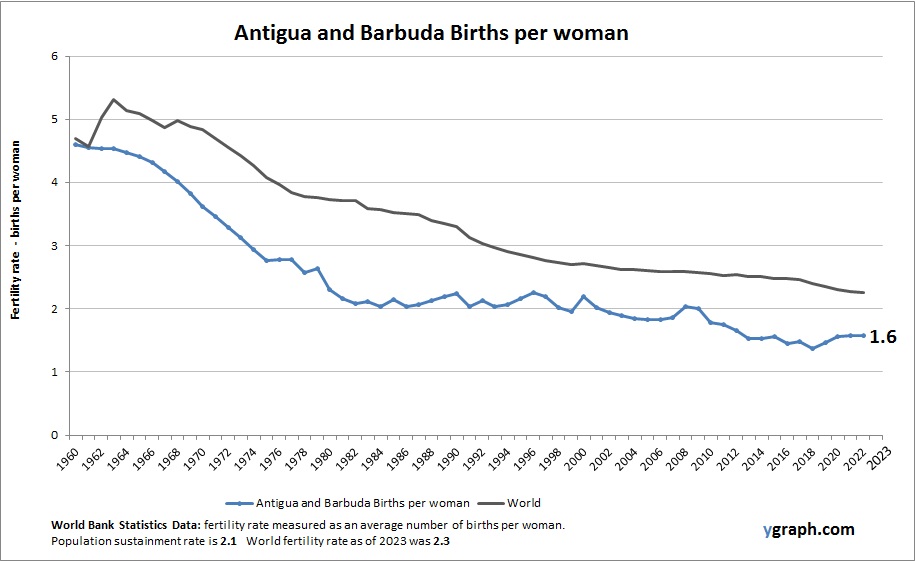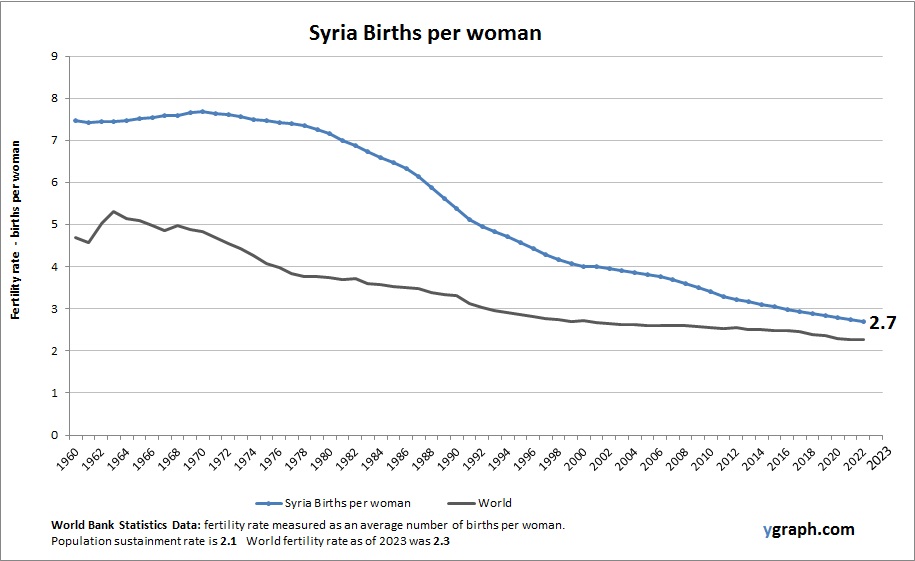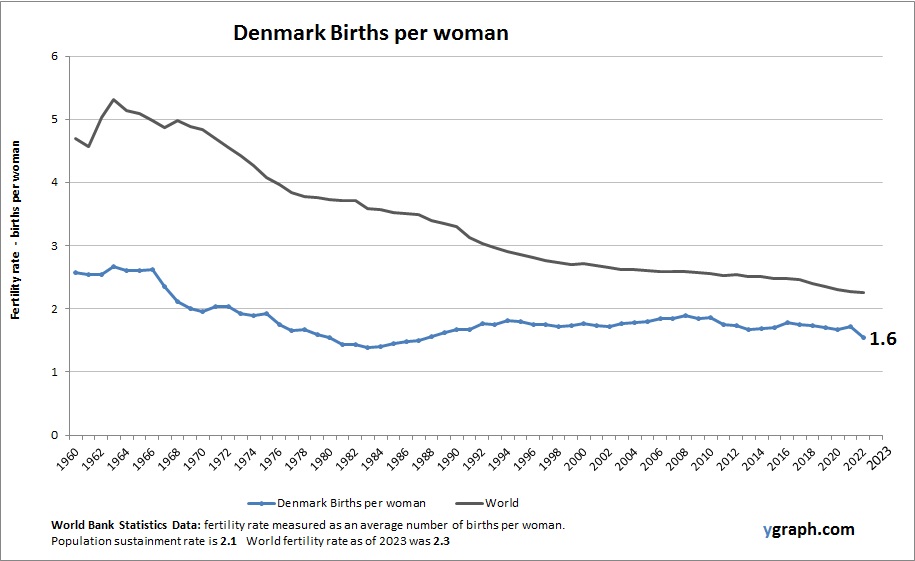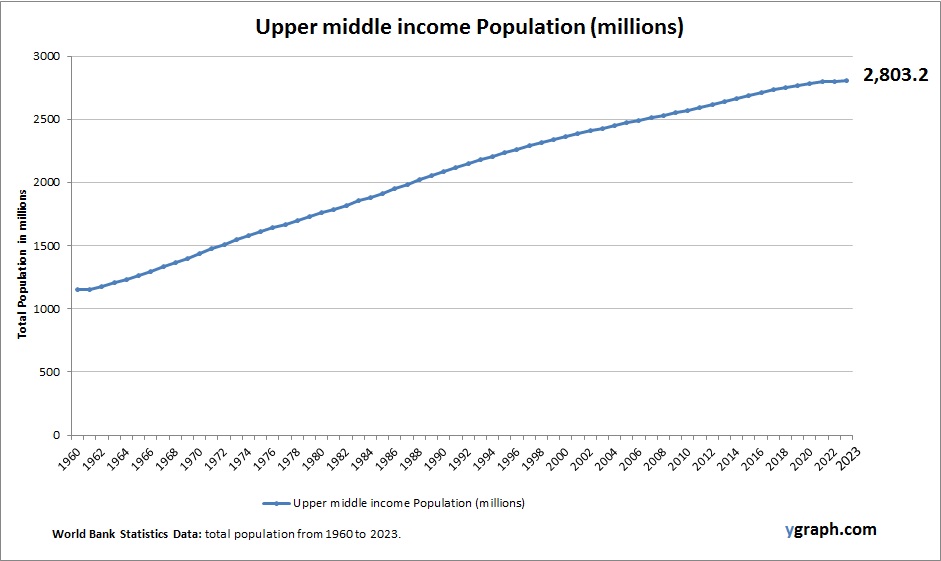Chart above demonstrates Netherlands Births per woman. This is according to World Bank birth stats by country. Based on the latest demographics info provided for Netherlands.
The Netherlands experiences low fertility rates, typical of Western European countries, influenced by factors such as delayed childbearing, high female labor participation, and widespread access to contraception. Although birth rates hover below replacement level, immigration helps sustain population size. Policies supporting work-life balance and family welfare contribute to demographic stability.
